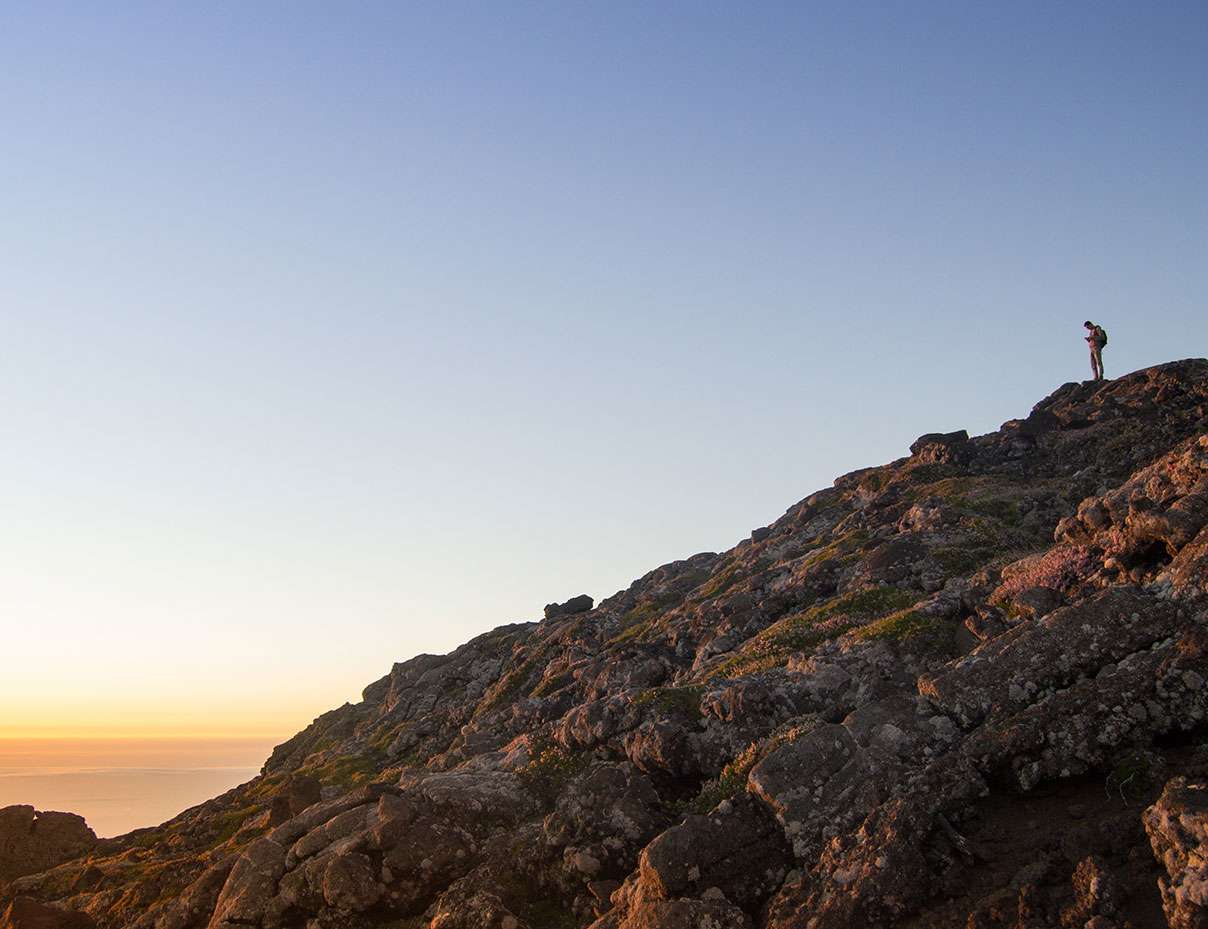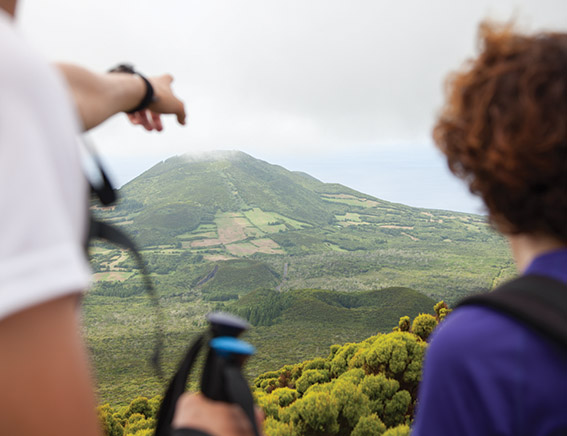Pico mountain climb is a very special activity. For the Pico ascent, specific mountaineering techniques are not required to reach the peak. But it is a tough ascent and descent. And that’s why we only advice it for active people. People used to hike in natural terrain, or used to sports in general. Pico mountain is an unique kind of stratovolcano. Most of the lava flows that cover the cone are less of 5000 years old. It’s possible to observe a significant number of very well preserved pahoehoe lavas, and other volcanic features. The mountain flora is also unique in Pico. Calluna vulgaris and Daboecia azorica cover most of the mountain above 1500 meters. And the Silene uniflora cratericola is specific to Pico crater. And only exists there. Weather wise it’s also challenging. Since it can change very quickly. It’s important to be well equipped and prepared for rain, cold, wind and heat. Pico mountain climb is a very demanding activity.
Atividade: Hiking
The Lagoon hike
The Lagoon hike starts at Lagoa do Capitão, with Pico mountain in sight. A geological fault made the soil impermeable and formed the lagoon. We walk through Pico central plateau. So we will have the chance to appreciate the view of Pico mountain. And cross a variety of volcanic characteristics, but also the meadows for cow farming. One of the most interesting segments is when we cross a well preserved native forest. There we can learn about some of the most emblematic endemic species. Lagoa do Capitão hike finishes at São Roque Village. Where if conditions are right, we can refresh ourselves by swimming in the ocean, overlooking Pico Mountain.
Lajido Vineyards trail
Lajido Vineyards trail is an easy and historical hike in Pico. We can see and learn about the history behind Pico vineyards landscape. And to understand why it was considered UNESCO world heritage. A wine culture that started on the 16th century and saw its golden age and fall, both in the 19th century. The surrounding volcanic landscape, formed by recent Hawaiian type volcanic activity is also of great interest. It was organised and transformed by our laborious ancestors, so they could grow their vineyards and produce wine. So, we will also be able to better understand the formation of these pahoe-hoe lava flows as well as the erosion made by the ocean. Lajido Vineyards trail is an easy and cultural hike.
10 Volcanoes
The 10 Volcanoes Trail is a full-day activity with 21km, and it’s the most immersive hike on Faial. During the activity, we will see a lot of the island. The hike includes the two most famous points of interest in Faial: Caldeira, and Capelinhos Volcano. Since we’ll cross various types of landscapes in between, we will have the opportunity to learn about the Azores native forest and its endemic species. We will start near the island’s highest point and finish at sea level. The geological interpretation of the island marks the experience. The 10 Volcanoes Trail travels west along Faial’s youngest volcanic system.
Caldeira Descent
The Caldeira of Faial has been a natural reserve since 1972 (category I – IUCN). It’s a volcanic collapse crater with unique characteristics. Since the Caldeira of Faial Descent is such a special experience, Faial Natural Park controls the access to the bottom, issuing only a limited number of permits. For this reason, a certified guide is mandatory for the Caldeira Descent.
The Caldeira of Faial is one of the last strongholds for the Azores native forest. It’s there that we can find more than 60% of the Azores endemic species and where you can experience how the Azores were before human settlement. The trail is difficult because it is very narrow and steep and, sometimes, scrambling is necessary. The Caldeira bio-diversity is composed of different humid habitats. Therefore, it’s common to find mud and flooded areas at the bottom.
Levadas trail
The Levadas Trail follows an old water canal that was built in the 1960s. The canal collected all of the water from the springs and water lines along the way and an artificial lake contained all of the water. The water flowed through a steep underground pipeline and dropped all the way to the sea level. This made it possible to solely use gravity power to produce electrical energy by means of hydraulic turbines. Today the system only works from time to time and it’s not very efficient. The 1998 earthquake rendered most of the levada inoperable. Along this trail, it’s possible to see and learn from a few native and endemic flora species. We will cross through Cryptomeria Japonica (Japonese Cedar) forests and meadows used for cow farming. The Levadas Trail starts in Cedros and follows the water canal, finishing at Capelo Parish.
Around Caldeira
The trail around the rim of Caldeira is the highest trail on Faial. Caldeira is a very unique volcanic collapse crater because the high altitude allows for a geological interpretation of most of Faial’s characteristics. The interior of the Caldeira is one of the most important nature preservation sites in the Azores. This trail also provides us with the opportunity to learn about the native flora because some species have adapted to live on the rim that is exposed to high winds. Our guides do not advise you to visit on a rainy or windy day, but on a clear day you can virtually see all around the island.













